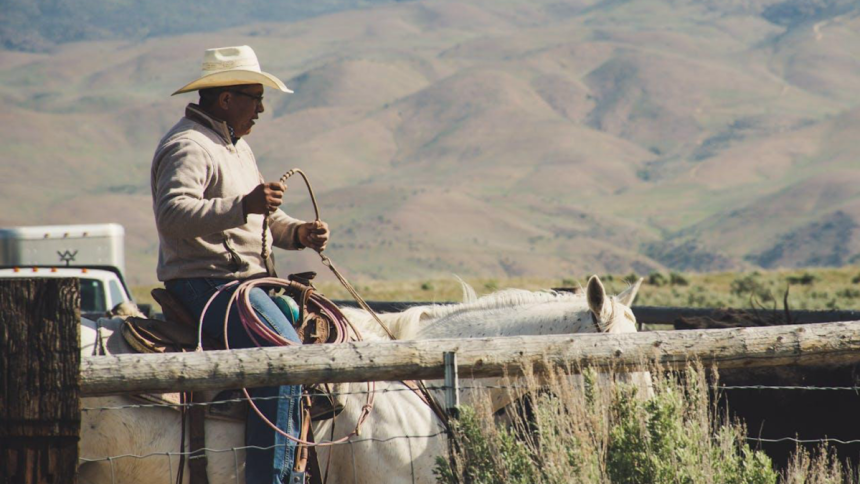Embracing the rustic charm of ranch living offers more than just a respite from the city’s bustle. It connects us to the earth and simplifies our lives in a profound way. This journey back to the essentials encourages a harmonious balance with nature and a community-focused lifestyle. Ready to trade your smartphone buzz for the sound of a rooster’s crow? Let’s dive into what makes life on a ranch a true return to the basics.
The Daily Rhythms of Ranch Life
Imagine your day starting with the sunrise, and your duties intertwined with the rhythms of nature. Here, amidst the sprawling landscapes, wearing sturdy boots and comfortable, functional with women western clothing becomes part of your identity. This attire isn’t just about style; it’s about utility and getting into the spirit of ranch living.
You could be feeding the livestock, mending fences, or harvesting fresh vegetables from your garden. Each task connects you deeply with the land and the cycle of life that dictates the pace on a ranch.
Reconnecting with Nature
Life on a ranch offers an unparalleled opportunity to reconnect with nature. You’re not just observing—you’re participating in the natural world. It’s about understanding the significance of each raindrop and appreciating every bit of shade provided by an old oak tree.
The immersion in nature does not stop with mere appreciation; it involves deep sensory engagement—feeling the wind, smelling the earth after a rain, and hearing the rustle of leaves. This full engagement offers a deep-seated tranquility and a profound connection that urban environments seldom match.
This connection extends to the animals as well. From horseback riding across vast fields to nurturing newborn calves, these experiences remind us of our relationship with other living beings and the mutual respect that sustains it. The care given to livestock is reciprocated, fostering a bond that enhances both their welfare and our understanding of life cycles in agriculture, further enriching our connection to the ranching life.
A Community of Shared Responsibilities
Ranch life isn’t a solitary endeavor. It thrives on a community of shared responsibilities. Neighbors help each other during the harvest, and knowledge is passed down through generations. This interdependent system creates a strong fabric of support where skills and stories are shared, not just through spoken word but through shared work and dedication to common goals.
Here, community events are not just social gatherings but also a way to forge stronger bonds and ensure mutual survival. Barn dances, potluck dinners, and rodeos become cherished traditions that reinforce community ties. These gatherings serve as vital forums for collaboration, celebration, and continuity, underpinning the strength and resilience of the rural community.
The Sustainable Approach
One cannot discuss ranch life without mentioning its inherent sustainability. Raising your own food, using solar panels for energy, and recycling water are common practices that minimize environmental impact. This not only provides a tangible connection to the food we consume but also instils a sense of responsibility towards the environment.
This lifestyle promotes a sustainable approach to living that urban environments often lack. By adopting these practices, ranchers not only care for their own land but also contribute to global environmental conservation efforts. The adoption of regenerative practices enhances soil fertility, promotes biodiversity, and builds ecological resilience, making ranching an exemplar of sustainable living.
Skills That Last a Lifetime
The skills you acquire on a ranch are as practical as they are credible. Whether it’s basic veterinary care, carpentry, or weather prediction, these abilities ensure resilience and self-sufficiency. Each skill acquired is not just a task completed, but a step towards greater independence and understanding of the natural and mechanical world.
Learning to fix a tractor, can fruits and vegetables, or even forecast the weather by observing cloud formations are invaluable skills that enhance a rancher’s independence and capability. These skills are not just for the immediate tasks at hand but are transferable lessons that offer lifelong benefits, providing a sense of capability and competence that enriches a rancher’s life.
What to remember
Living on a ranch strips life down to its fundamental elements, echoing a symphony of authentic experiences that urban dwellings seldom provide. This lifestyle is not about abandoning technology but about enhancing your daily life with timeless, natural rhythms. It offers a unique combination of serenity and challenge, where each day brings tangible results and a closer connection to the essentials of life. If this lifestyle appeals to you, consider embracing a simpler existence that prioritizes well-being over constant connectivity.
Why not take a step back from modern conveniences and rediscover the basics? Visit a local ranch to see firsthand the serene and industrious day-to-day life, or better yet, start planning how you can integrate aspects of ranch life into your own routine. Whether it’s adopting sustainable practices or engaging more directly with the food you consume, each element brings you closer to the core of natural living. Nature is calling—are you ready to answer? Here are a few steps to get started:
- Explore Local Farms: Spend a day at a ranch to experience the lifestyle.
- Learn Basic Agriculture: Start with a small vegetable garden or a few chickens.
- Adopt Sustainability Practices: Implement composting and water recycling at home.
- Engage with Community Agriculture: Join a local co-op or farming group.
- Educate Yourself on Native Flora and Fauna: Understand the ecosystems around you.
- Practice Outdoor Skills: Learn horseback riding or basic outdoor survival skills.
Lynn Martelli is an editor at Readability. She received her MFA in Creative Writing from Antioch University and has worked as an editor for over 10 years. Lynn has edited a wide variety of books, including fiction, non-fiction, memoirs, and more. In her free time, Lynn enjoys reading, writing, and spending time with her family and friends.















